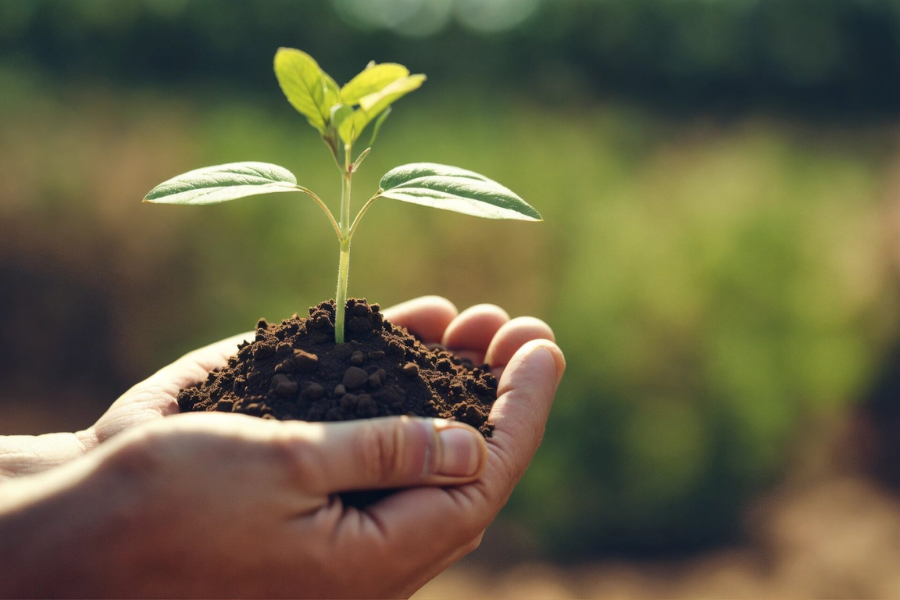Discovering the World of Planterij: Your Guide to Plant Cultivation and Care
Plants are far more than just decorative elements in our spaces; they are integral to our environment, contribute to our well-being, and can serve as sources of nourishment and medicine. Embracing the concept of a “Planterij” – a dedicated space or practice for growing and nurturing plants – offers countless benefits and opportunities. In this guide, we will delve into the essentials of creating and maintaining a Planterij, from fundamental plant care to innovative gardening techniques.
The Essentials of Plant Growth
Photosynthesis: The Heartbeat of Plant Life
Photosynthesis is the cornerstone of plant growth. This remarkable process allows plants to convert sunlight into energy. Chlorophyll, the green pigment in plants, captures light energy and uses it to transform carbon dioxide and water into glucose and oxygen. This process not only supports plant life but also provides the oxygen we rely on to breathe.
Nutrients and Soil Health
Plants need a range of nutrients to thrive, including macronutrients like nitrogen (N), phosphorus (P), and potassium (K), as well as micronutrients such as iron, magnesium, and calcium. Healthy soil is crucial for providing these nutrients. Ideal soil is well-drained, fertile, and has a balanced pH. Enriching soil with organic matter like compost can enhance its structure and nutrient content.
Watering and Drainage
Proper watering is key to plant health. Too much water can lead to root rot, while too little can cause dehydration. Understanding the specific water needs of each plant species is essential. Additionally, effective drainage prevents waterlogging, which can damage plant roots.
Setting Up Your Planterij
Choosing the Right Location
The success of your Planterij depends largely on its location. Whether it’s a garden bed, greenhouse, or indoor space, choosing a spot with adequate light exposure is crucial. For indoor plants, south-facing windows or grow lights can provide the necessary illumination.
Selecting Suitable Plants
When starting a Planterij, choose plants that are suited to your local climate and soil conditions. Research the hardiness zone of your area to select plants that will thrive there. For beginners, hardy and low-maintenance options like herbs, succulents, and certain vegetables can be a great start.
Designing Your Plant Layout
Effective layout planning can maximize space and enhance plant growth. Consider the mature size of plants and their light needs when arranging them. Companion planting, where certain plants benefit from being grown together, is another strategy to optimize your Planterij.
Plant Care and Maintenance
Fertilization Techniques
Fertilizers supply essential nutrients that may be lacking in the soil. Organic options like compost, manure, and bone meal naturally enrich the soil, while chemical fertilizers provide specific nutrient ratios. Follow manufacturer instructions to avoid over-fertilization.
Pruning and Deadheading
Pruning involves removing dead or diseased plant parts to encourage healthy growth and shape the plant. Deadheading, or removing spent flowers, can prolong the blooming period of flowering plants and enhance their appearance.
Managing Pests and Diseases
Pests and diseases can threaten plant health. Regular inspections for issues like discolored leaves or pests are crucial. Integrated pest management (IPM) combines biological, cultural, and mechanical methods to control pests effectively. Organic treatments such as neem oil or insecticidal soap can also be beneficial.
Adapting to the Seasons
Spring Planting
Spring is a prime time for planting as temperatures rise and frost risks decrease. This is the ideal period to sow seeds or transplant seedlings. Prepare your soil, add compost, and plan for the upcoming growing season.
Summer Care
In summer, increased temperatures may necessitate additional watering. Mulching helps retain soil moisture and keep roots cool. Be vigilant for pests and diseases, which can be more prevalent in warmer weather.
Autumn Preparation
As autumn approaches, prepare plants for the cooler months. This may include pruning, reducing watering, and adding mulch to protect roots from frost. For perennials, consider dividing and replanting as needed.
Winter Care
Winter can be challenging for plants, especially those sensitive to frost. In colder climates, use row covers, cloches, or greenhouses for extra protection. Indoor plants may require less frequent watering and fertilization during winter.
Exploring Advanced Techniques
Hydroponics and Aquaponics
Hydroponics is a method of growing plants without soil, using a nutrient-rich water solution. This approach can lead to faster growth and higher yields. Aquaponics combines hydroponics with aquaculture, where fish waste provides nutrients for the plants, and plants help clean the water for the fish.
Vertical Gardening
Vertical gardening involves growing plants on vertical surfaces like walls or trellises. This technique is perfect for small spaces and adds visual appeal. You can use various materials, such as trellises, wall-mounted planters, or repurposed pallets.
Smart Gardening
Technology has brought about smart gardening tools, including automated watering systems, soil sensors, and app-controlled grow lights. These innovations make plant care more efficient and accessible, especially for busy individuals or novice gardeners.
Discover captivating content and the hottest topics in entertainment on Tamasha.blog.
The Benefits of a Planterij
Environmental Impact
Growing plants positively affects the environment by absorbing carbon dioxide and producing oxygen, contributing to cleaner air. Gardens also support local biodiversity by providing habitats for pollinators and wildlife.
Personal Well-Being
Gardening offers numerous mental and physical health benefits. It can reduce stress, improve mood, and provide a sense of accomplishment. Growing your own food promotes healthier eating habits and encourages physical activity.
Community and Education
A Planterij can be a hub for community engagement and education. Community gardens, school gardens, and shared green spaces provide opportunities to learn about plant care, sustainability, and healthy living. These spaces also foster social connections and support local food systems.
FAQs:
1. What is a Planterij?
A Planterij is a dedicated space or practice focused on cultivating and caring for plants. It can range from a garden bed or greenhouse to an indoor plant setup. The goal of a Planterij is to grow plants effectively and enjoy the various benefits they offer.
2. How do I choose the right location for my Planterij?
Selecting the right location involves considering light exposure, accessibility, and the specific needs of your plants. Most plants require ample sunlight, so choose a spot with good natural light. For indoor plants, south-facing windows or grow lights can provide the necessary illumination.
3. What are the essential nutrients plants need?
Plants need both macronutrients and micronutrients to thrive. Macronutrients include nitrogen (N), phosphorus (P), and potassium (K), while micronutrients encompass iron, magnesium, and calcium. Ensuring your soil or growing medium has a balanced supply of these nutrients is crucial for healthy plant growth.
4. How often should I water my plants?
Watering frequency depends on the plant species, soil type, and environmental conditions. It’s important to understand the specific needs of each plant. Generally, water when the top inch of soil feels dry. Avoid overwatering, which can lead to root rot, and ensure proper drainage to prevent waterlogging.
5. What are some common pests and how can I manage them?
Common pests include aphids, spider mites, and whiteflies. Regularly inspect plants for signs of pests and use integrated pest management (IPM) strategies to control them. This can include introducing beneficial insects, using organic treatments like neem oil, or applying insecticidal soap.
6. What is vertical gardening, and how can I get started?
Vertical gardening involves growing plants on vertical surfaces such as walls or trellises. It’s a great solution for small spaces and adds visual appeal. You can start by using wall-mounted planters, trellises, or repurposed pallets to create a vertical garden.
7. What is hydroponics, and how does it work?
Hydroponics is a method of growing plants without soil, using a nutrient-rich water solution instead. Plants receive all their nutrients directly from the water, which can lead to faster growth and higher yields. It’s a soilless cultivation technique that can be used indoors or in controlled environments.
8. How can I prepare my Planterij for different seasons?
- Spring: Ideal for planting; prepare the soil, sow seeds, and transplant seedlings.
- Summer: Ensure adequate watering, mulch to retain moisture, and monitor for pests.
- Autumn: Prune plants, reduce watering, add mulch, and prepare perennials for winter.
- Winter: Protect frost-sensitive plants with row covers or greenhouses, and reduce watering for indoor plants.
9. What are the benefits of having a Planterij?
A Planterij offers numerous benefits, including environmental impacts like cleaner air and support for biodiversity. It also enhances personal well-being by reducing stress and promoting physical activity. Additionally, it can serve as a community and educational space, fostering social connections and learning opportunities.
Conclusion
Creating and maintaining a Planterij offers a rewarding experience that extends beyond simple plant cultivation. By understanding the basics of plant growth, setting up an effective Planterij, and employing advanced techniques, you can enjoy the many benefits that come from nurturing plants. Whether you’re enhancing your environment, improving your well-being, or engaging with your community, a Planterij provides a versatile and fulfilling way to connect with nature and contribute positively to your surroundings. Embrace the art and science of gardening, and let your Planterij flourish.


